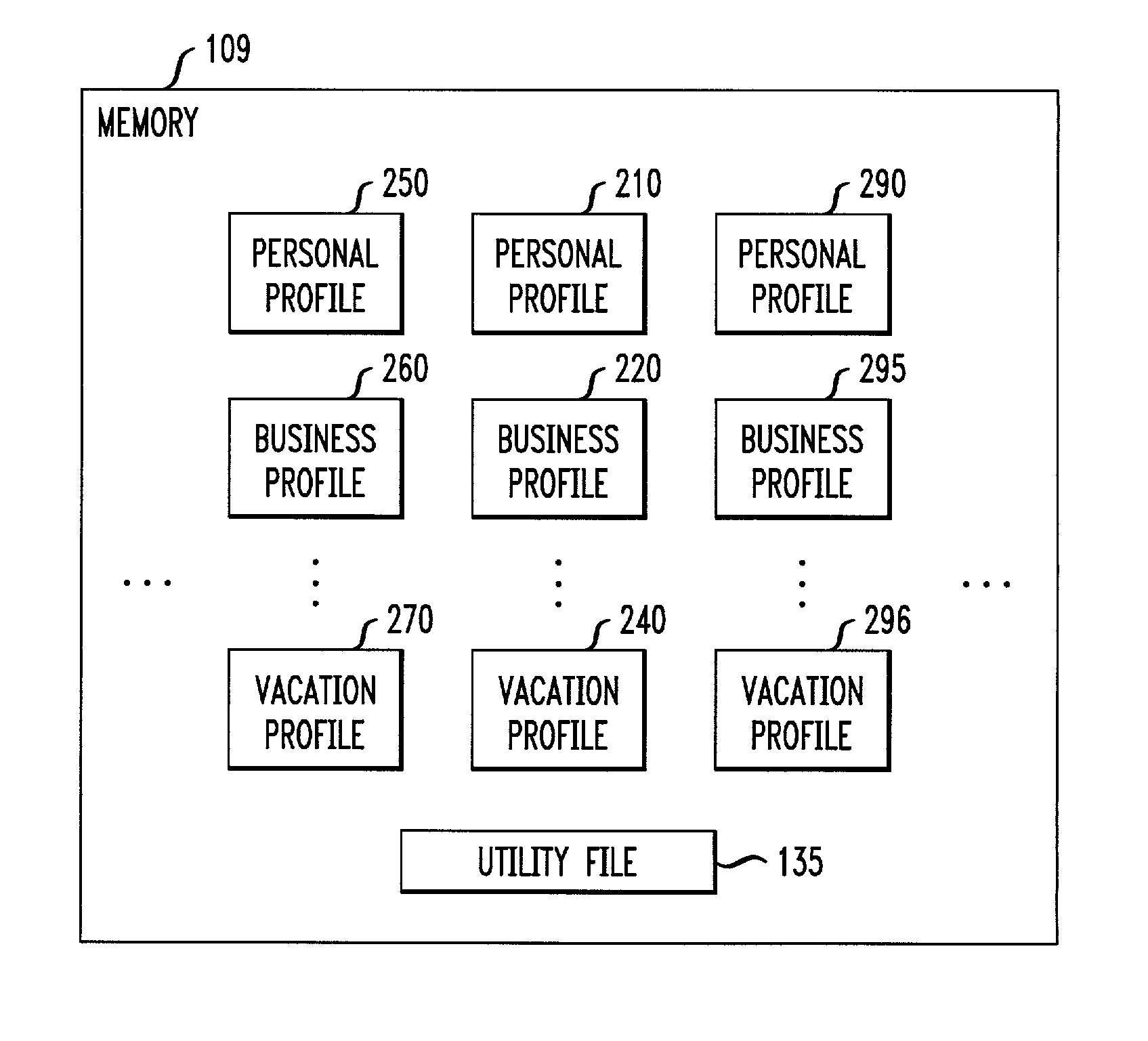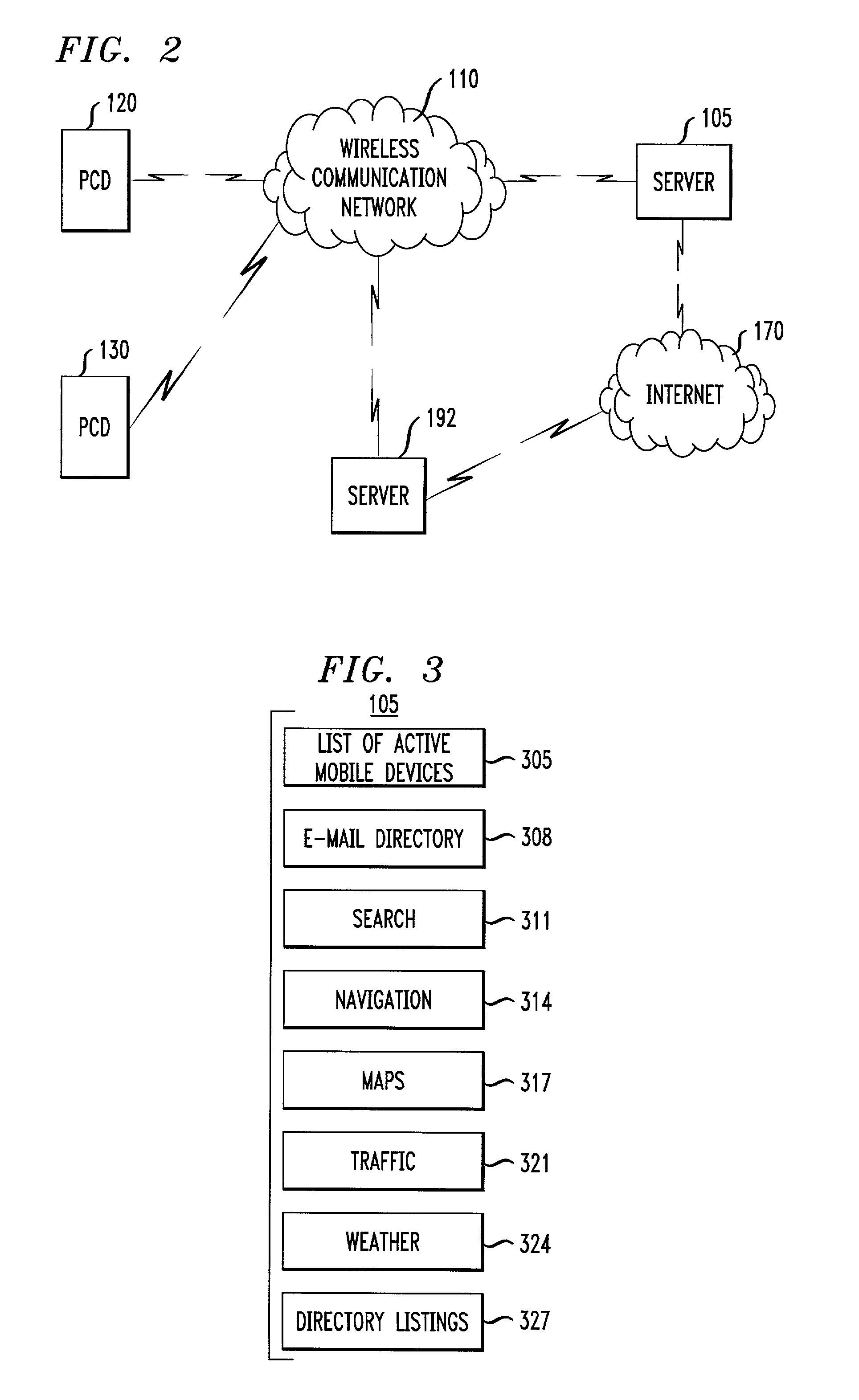Technique for effective organization and communication of information
a technology of information organization and communication, applied in the field of communication system and method, can solve the problems of flood of data, user overwhelm, and inability to realize useful and important data, etc., and achieve the effect of reducing the number of users
- Summary
- Abstract
- Description
- Claims
- Application Information
AI Technical Summary
Benefits of technology
Problems solved by technology
Method used
Image
Examples
Embodiment Construction
[0036]FIG. 1 illustrates an arrangement embodying the principles of the invention, where server 105 is employed to collect and organize information for users of mobile devices. Advantageously, with the inventive arrangement, the burden of a mobile device in maintaining vast quantities of information is mostly shifted onto server 105 and is thus substantially reduced. In addition, the user information in server 105 may be distributed to different mobile devices upon the user's request, thereby facilitating sharing of the same information among the devices.
[0037]In FIG. 1, server 105 includes processor 107, memory 109 and interfaces 112 and 128. Interface 112, including modem facilities, is used to connect server 105 to a communication network, such as Internet 170. Through processor 107, server 105 may communicate with other servers connected to Internet 170. For example, server 105 may request library servers to search for particular information items. Memory 109 is used to store da...
PUM
 Login to View More
Login to View More Abstract
Description
Claims
Application Information
 Login to View More
Login to View More - R&D
- Intellectual Property
- Life Sciences
- Materials
- Tech Scout
- Unparalleled Data Quality
- Higher Quality Content
- 60% Fewer Hallucinations
Browse by: Latest US Patents, China's latest patents, Technical Efficacy Thesaurus, Application Domain, Technology Topic, Popular Technical Reports.
© 2025 PatSnap. All rights reserved.Legal|Privacy policy|Modern Slavery Act Transparency Statement|Sitemap|About US| Contact US: help@patsnap.com



